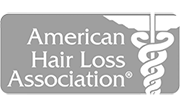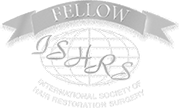An uneven hairline can be a source of concern for many seeking a symmetrical and aesthetically pleasing facial appearance.
While some degree of asymmetry is natural and common, a noticeably uneven hairline can sometimes be the result of various factors, including genetics, natural hair loss patterns, or less-than-ideal outcomes from previous hair restoration procedures. At Charles Medical Group, under the experienced guidance of Dr. Glenn M. Charles, we understand the intricate nature of hairline correction and offer advanced solutions to fix an uneven hairline.
Genetic and Pattern-Related Causes of an Uneven Hairline
The hairline is often influenced by hereditary traits, which means if asymmetrical hairlines run in the family, you might be more inclined to have one. Moreover, male and female pattern baldness can exacerbate this asymmetry, as hair loss doesn’t always occur uniformly across the scalp. Understanding these patterns is crucial for Dr. Charles when it comes to planning a successful hairline correction procedure.
Previous Hair Restoration Attempts
Sometimes, an uneven hairline is the result of a previous hair transplant that did not achieve the desired level of symmetry or natural appearance. In such cases, Dr. Charles assesses the existing hairline and devises a corrective plan that not only addresses the asymmetry but also integrates seamlessly with the patient’s natural hair growth patterns.
Surgical Options for Correcting an Uneven Hairline
The primary methods for surgical hairline correction at Charles Medical Group are Follicular Unit Excision (FUE) and Follicular Unit Grafting/Transplantation (FUT). Both techniques involve the precise placement of hair follicles to create a more natural and symmetrical hairline.
- FUE involves extracting individual hair follicles from a donor area and transplanting them to the uneven regions of the hairline. This technique is minimally invasive and leaves no linear scarring, making it a popular choice for patients.
- FUT, on the other hand, involves removing a strip of hair-bearing skin from the donor area and dissecting it into individual grafts. This method allows for the transplantation of a large number of grafts in one session and can be more cost-effective than FUE.
Dr. Charles meticulously plans and executes these procedures, taking into account the patient’s facial structure, natural hair growth direction, and overall goals to achieve a balanced and natural-looking hairline.
Complementary Non-Surgical Therapies
To enhance the results of hairline correction, Charles Medical Group offers supportive therapies such as Platelet-Rich Plasma (PRP) treatments and the LaserCap therapy. PRP involves using the patient’s own blood platelets to stimulate hair growth and healing, while LaserCap therapy utilizes low-level laser light to promote hair density and health. These non-surgical options can be used in conjunction with hair transplants or as standalone treatments to improve hairline symmetry.
Post-Procedure Care for Maintaining Results
After a hairline correction procedure, proper care is essential to maintain the results. Dr. Charles provides detailed post-operative instructions, which may include guidelines on washing and caring for your hair, activities to avoid during the recovery period, and tips for protecting the hairline from sun exposure. Following these instructions is key to ensuring the longevity of a symmetrical hairline.
At Charles Medical Group, each patient receives a tailored approach to hairline correction. Dr. Charles’s expertise in hair restoration artistry ensures that the results are harmonious with the patient’s features, yielding an aesthetically pleasing and natural appearance. If you’re troubled by an uneven hairline and seeking correction, consider the advanced and personalized options available at Charles Medical Group. Whether through precise surgical techniques or supportive non-surgical therapies, Dr. Charles is dedicated to helping you achieve the balanced look you desire.




